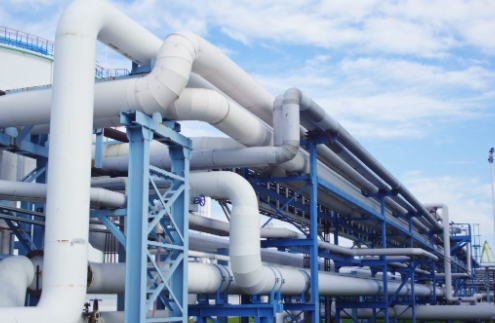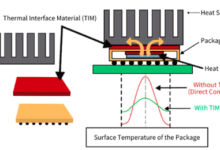Maximizing Efficiency: Troubleshooting Techniques for Optimal Operation of Water Treatment Plants

Water treatment plants play a critical role in ensuring access to clean and safe drinking water for communities around the world. However, the effective operation of these facilities is often challenged by various factors that can hinder their efficiency.
In this article, we will explore the importance of maximizing efficiency in water treatment plants and delve into the troubleshooting techniques that can help achieve optimal operation.
Understanding the Importance of Efficiency
Efficiency is a cornerstone of effective water treatment plant operations. Maximizing efficiency not only ensures the consistent delivery of high-quality drinking water but also helps minimize costs, reduce energy consumption, and mitigate environmental impacts.
In an era where water resources are increasingly strained due to population growth and climate change, the efficient use of water treatment infrastructure is more critical than ever.
Challenges to Efficiency
Several factors can impede the efficiency of water treatment plants, ranging from mechanical issues to process inefficiencies.
Common challenges include equipment malfunction, fouling of membranes and filters, inadequate chemical dosing, fluctuating raw water quality, and operational errors. Left unchecked, these challenges can lead to suboptimal performance, increased operating costs, and compromised water quality.
Read also: Seeds of Change: Sowing the Path to a Plant-Based, Plastic-Free Future
Troubleshooting Techniques
To effectively address these challenges and optimize performance, water treatment plant operators employ specialized techniques to troubleshoot water treatment plant issues.
These targeted methods are designed to swiftly identify and resolve problems, minimizing disruptions and ensuring a continuous supply of clean water to consumers. Some of the key troubleshooting techniques include:
Regular Monitoring and Analysis
Continuous monitoring of key performance indicators such as flow rates, pressure levels, turbidity, and chemical concentrations is essential for detecting deviations from normal operating conditions. By analyzing this data in real-time, operators can identify potential issues early on and take proactive measures to address them.
Root Cause Analysis
When problems arise, conducting a thorough root cause analysis is crucial for identifying the underlying factors contributing to the issue. This may involve examining equipment logs, conducting inspections, and performing diagnostic tests to pinpoint the source of the problem.
By addressing the root cause rather than just the symptoms, operators can implement more effective solutions and prevent recurrence.
Performance Optimization
Optimizing the performance of water treatment processes is key to maximizing efficiency. This may involve fine-tuning operational parameters such as chemical dosing rates, filtration rates, and backwash frequencies to achieve optimal treatment outcomes while minimizing resource consumption.
Additionally, implementing advanced control strategies and automation technologies can help streamline plant operations and improve overall efficiency.
Preventive Maintenance
Regular maintenance of equipment and infrastructure is essential for preventing unexpected breakdowns and ensuring reliable operation.
Establishing a proactive maintenance schedule, conducting routine inspections, and promptly addressing minor issues can help extend the lifespan of equipment and minimize the risk of costly repairs or replacements.
Staff Training and Development
Investing in the training and development of plant personnel is critical for maintaining a skilled workforce capable of effectively troubleshooting and addressing operational challenges.
Providing comprehensive training programs, fostering a culture of continuous learning, and encouraging collaboration among team members can enhance the plant’s troubleshooting capabilities and overall performance.
Chemical Analysis and Adjustment
Conducting regular chemical analysis of water samples is crucial for ensuring proper chemical dosing and treatment efficacy.
By monitoring parameters such as pH, alkalinity, hardness, and disinfectant residuals, operators can identify deviations from target levels and adjust chemical dosing accordingly. This helps maintain optimal treatment conditions and prevents issues such as corrosion, scaling, and microbial growth.
Hydraulic Analysis
Hydraulic analysis involves evaluating the hydraulic performance of treatment processes, pipelines, and distribution systems to identify potential bottlenecks, pressure losses, and flow imbalances.
By modeling flow dynamics and pressure profiles, operators can optimize system design, improve hydraulic efficiency, and ensure uniform distribution of treated water to consumers.
Data-driven Decision Making
Leveraging data analytics and predictive modeling tools can provide valuable insights into plant performance and help anticipate potential issues before they occur.
By analyzing historical data trends, identifying patterns, and establishing predictive models, operators can make informed decisions regarding maintenance scheduling, process optimization, and resource allocation, ultimately enhancing overall efficiency and reliability.
Emergency Response Planning
Developing comprehensive emergency response plans is essential for minimizing the impact of unforeseen events such as equipment failures, power outages, and natural disasters.
By establishing protocols for rapid response, communication, and resource mobilization, operators can mitigate downtime, prevent service disruptions, and ensure the continued delivery of safe drinking water to consumers during emergencies.
Continuous Improvement
Adopting a culture of continuous improvement is key to optimizing the performance of water treatment plants over the long term.
Encouraging feedback from frontline staff, soliciting input from stakeholders, and implementing feedback loops for process optimization can help identify opportunities for efficiency gains and drive ongoing improvements in plant operations, maintenance practices, and performance metrics.
Conclusion
Maximizing efficiency is essential for ensuring the optimal operation of water treatment plants and delivering clean and safe drinking water to communities. By employing proactive troubleshooting techniques, plant operators can identify and address operational challenges in a timely manner, minimize downtime, and enhance overall performance.
Through continuous monitoring, analysis, and optimization, water treatment plants can maintain efficiency, resilience, and sustainability in the face of evolving environmental and operational pressures.






